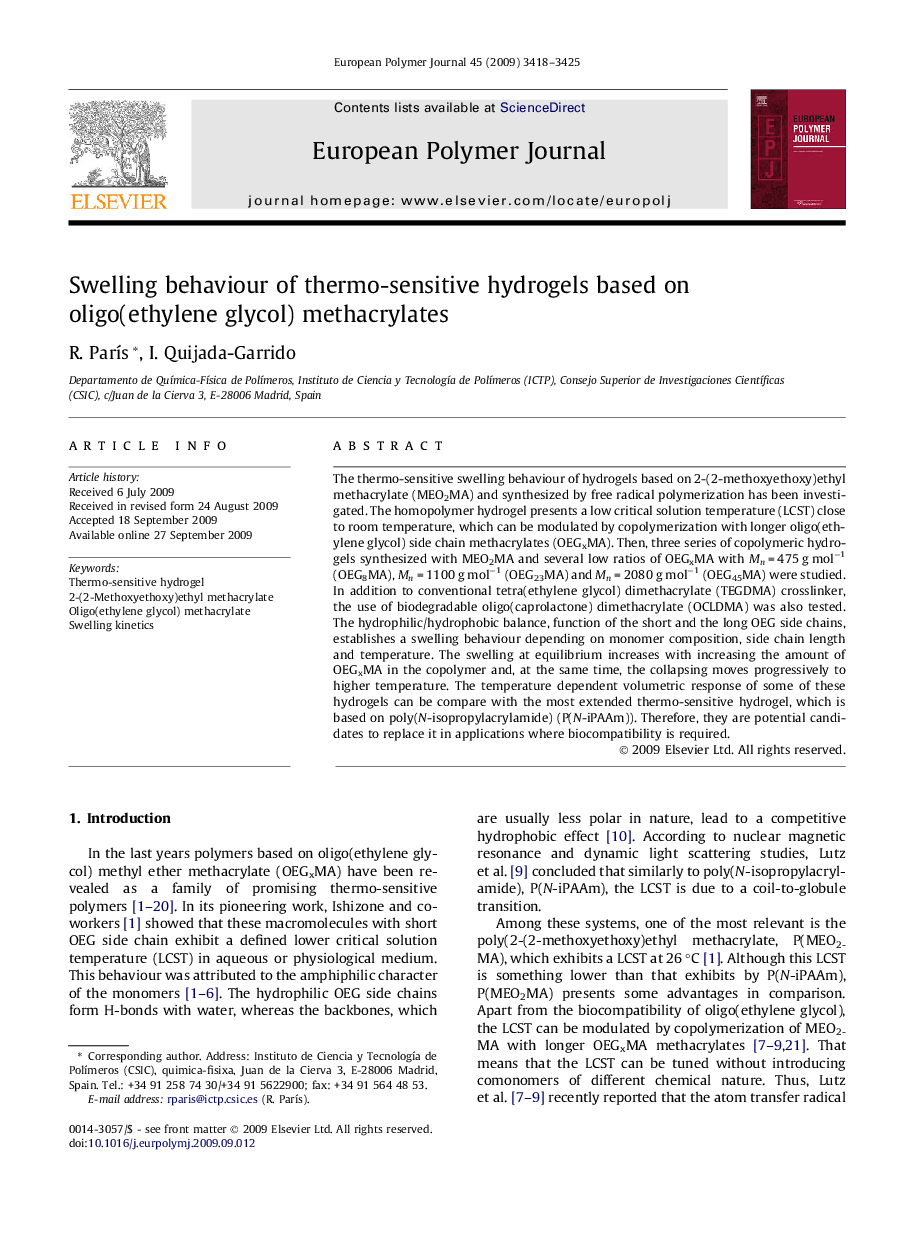| Article ID | Journal | Published Year | Pages | File Type |
|---|---|---|---|---|
| 1396228 | European Polymer Journal | 2009 | 8 Pages |
The thermo-sensitive swelling behaviour of hydrogels based on 2-(2-methoxyethoxy)ethyl methacrylate (MEO2MA) and synthesized by free radical polymerization has been investigated. The homopolymer hydrogel presents a low critical solution temperature (LCST) close to room temperature, which can be modulated by copolymerization with longer oligo(ethylene glycol) side chain methacrylates (OEGxMA). Then, three series of copolymeric hydrogels synthesized with MEO2MA and several low ratios of OEGxMA with Mn = 475 g mol−1 (OEG8MA), Mn = 1100 g mol−1 (OEG23MA) and Mn = 2080 g mol−1 (OEG45MA) were studied. In addition to conventional tetra(ethylene glycol) dimethacrylate (TEGDMA) crosslinker, the use of biodegradable oligo(caprolactone) dimethacrylate (OCLDMA) was also tested. The hydrophilic/hydrophobic balance, function of the short and the long OEG side chains, establishes a swelling behaviour depending on monomer composition, side chain length and temperature. The swelling at equilibrium increases with increasing the amount of OEGxMA in the copolymer and, at the same time, the collapsing moves progressively to higher temperature. The temperature dependent volumetric response of some of these hydrogels can be compare with the most extended thermo-sensitive hydrogel, which is based on poly(N-isopropylacrylamide) (P(N-iPAAm)). Therefore, they are potential candidates to replace it in applications where biocompatibility is required.
Graphical abstractFigure optionsDownload full-size imageDownload as PowerPoint slide
